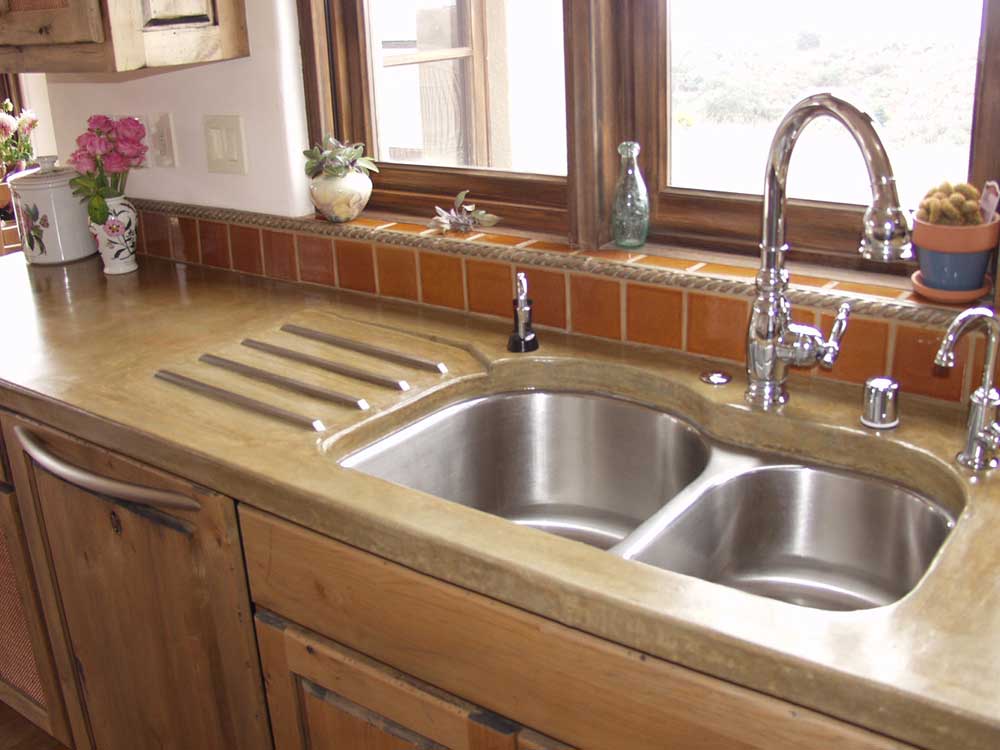
Where the counterform meets plywood, all seams (from the outside)–we also duct taped the outside corners as an extra precaution, and where the counterform meets the wall in the back.
#Concrete skim coat countertop crack
This is where you are going to want to silicone every crack where the concrete could leak out. We did a similar process for the faucet hole. We wrapped the edges in packing tape to promote the smoothest finish on the sink edge, marked where the top of the concrete would sit and siliconed that to the sink (came right off after the concrete dried!). To protect the sink from getting mounds of poured concrete in it, we used the sink template to cut out a form in 2″ blueboard styrofoam. Since we were planning on an undermount sink and pouring concrete in place, this is the time to undermount the sink! It felt a little backwards at first, but we cut the hole for the sink and siliconed and braced it in place. They had all sorts of fancy profiles for countertops, but we like the simple square edge.
#Concrete skim coat countertop full
While the form for the front edges had a dip in it so it would go slightly down in front of the cabinets appearing to be a full 2 1/4″ thick. The backside of the countertop had a simple 90 degree straight edge form: Preston is the one who told us about Z Counterforms because he had worked with them before, had great results and they are geared to DIYers and professionals alike. Once the plywood was set, we started attaching the forms. Like I said, it all turned out great in the end, so all is well that ends well, but after talking to the guys at Z Counterform, Durock would have eliminated a lot of the excess liquid.

This concrete mix was more fluid and we had quite a mess on our hands at one point. While plywood is an acceptable base, we learned that Durock absorbs liquid, while plywood repels it. Although our countertops turned out awesome, if we were doing it again, we would definitely use Durock cement boards in place of the plywood. We started out by screwing in 5/8″ CDX plywood from underneath our cabinets. The prep work is the most important part of DIYing concrete countertops. Last Saturday, with the help of our friend Preston ( musician, DIY master, concrete worker extraordinaire), we DIYed our countertops and today I’m here to spill all the details, the results and a few lessons we learned. There are a few different kinds of concrete countertops floating around blog land, but for ours, we poured them in place using white countertop concrete mix and squared edge counterforms from Z Counterforms. We love to mix traditional and modern with an industrial edge in our home and white concrete countertops around the perimeter of the kitchen (with a walnut island top) not only sounded like a fun project to do and share, but we hoped it would add a bit of modern character to the kitchen.

Ever since we came in contact with the Pugmire’s concrete countertops in their kitchen, we have had it in the back of our minds for ours–except in white to contrast our dark cabinets.


 0 kommentar(er)
0 kommentar(er)
